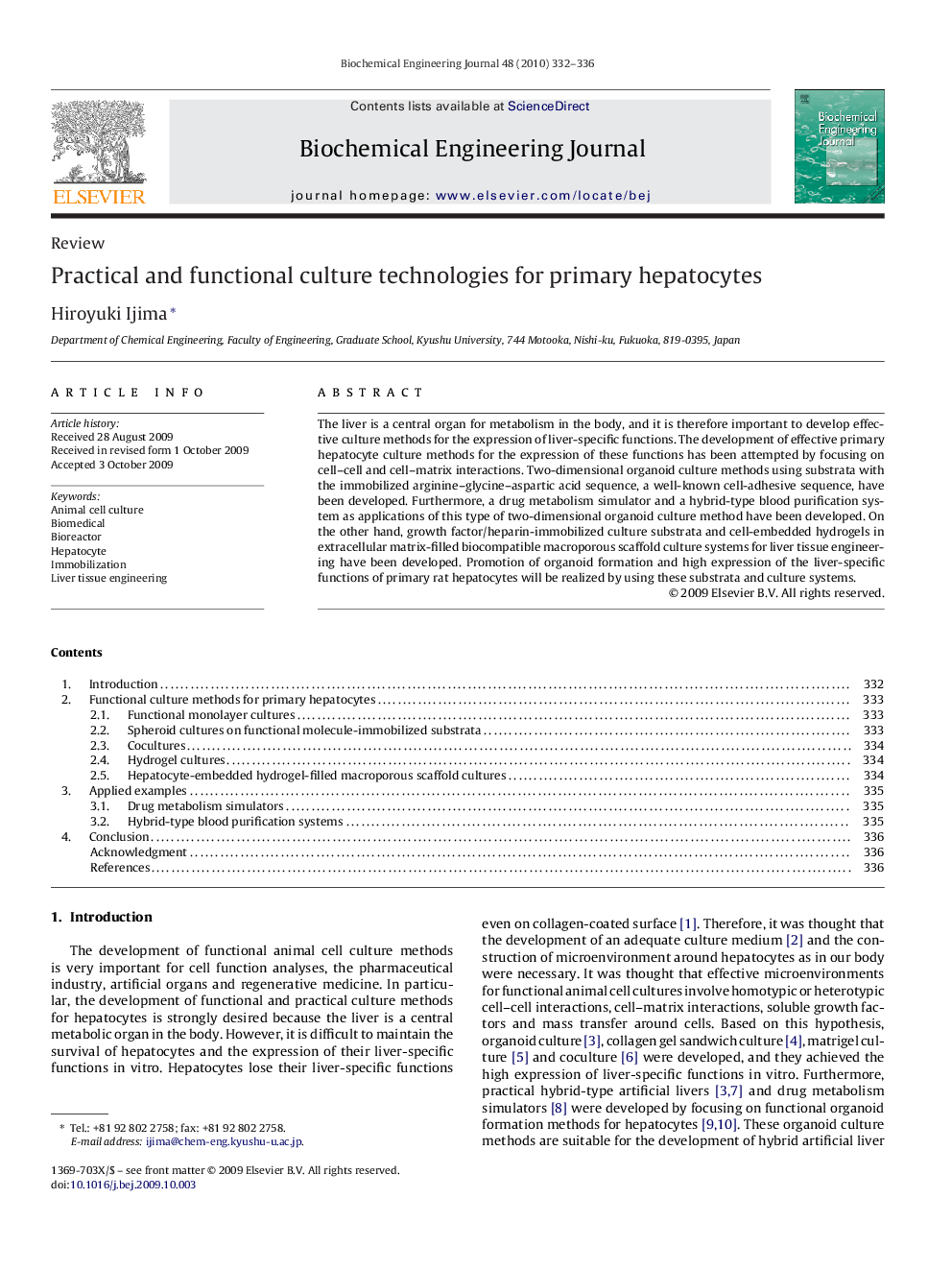| Article ID | Journal | Published Year | Pages | File Type |
|---|---|---|---|---|
| 4152 | Biochemical Engineering Journal | 2010 | 5 Pages |
The liver is a central organ for metabolism in the body, and it is therefore important to develop effective culture methods for the expression of liver-specific functions. The development of effective primary hepatocyte culture methods for the expression of these functions has been attempted by focusing on cell–cell and cell–matrix interactions. Two-dimensional organoid culture methods using substrata with the immobilized arginine–glycine–aspartic acid sequence, a well-known cell-adhesive sequence, have been developed. Furthermore, a drug metabolism simulator and a hybrid-type blood purification system as applications of this type of two-dimensional organoid culture method have been developed. On the other hand, growth factor/heparin-immobilized culture substrata and cell-embedded hydrogels in extracellular matrix-filled biocompatible macroporous scaffold culture systems for liver tissue engineering have been developed. Promotion of organoid formation and high expression of the liver-specific functions of primary rat hepatocytes will be realized by using these substrata and culture systems.
